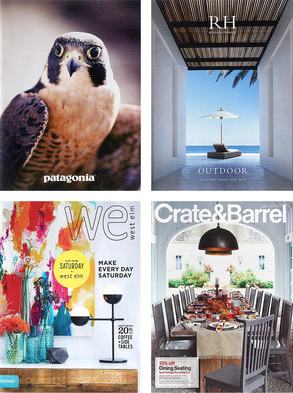 Say what you will about Millennials — and there’s certainly been enough said already, on everything from student loan burden to homeownership to craft beer and avocado toast. While these digital natives may spend a good part of their day online, marketers may be missing the boat in one important channel.
Say what you will about Millennials — and there’s certainly been enough said already, on everything from student loan burden to homeownership to craft beer and avocado toast. While these digital natives may spend a good part of their day online, marketers may be missing the boat in one important channel.
“Consider this: Two out of every three of them (65%) have made a purchase that was influenced by a catalog,” writes Lisa Henthorn in MultiChannelMerchant. She cited Neil O’Keefe, senior VP of marketing and content for the Data & Marketing Association (DMA), who said:
“Millennials are very engaged by imagery, and the catalog really allows that to stand out … It’s unique to the generation that hasn’t experienced the amount of mail of past generations. So, the response rate there is very different than what you would experience with a display ad, even an email. The response rate for a printed piece has been on the rise as of late.”
This group of 21-35 year-olds are expected to have an estimated collective wealth around $24 trillion by next year. This is helping retailers wake up to the reality that catalogs, combined with technology that makes personalization possible and affordable, can make a significant difference in how they purchase. Brands would do well to look beyond the assumptions they may be making about this age group.
“…thoughtful retailers are actually incorporating catalog marketing into their fulfillment strategy – leveraging warehouse technology in new ways to combine personalized catalogs with each order shipment,” Henthorn writes. “For example, after a customer orders a pair of hiking boots, order packing software alerts the fulfillment team to include a catalog on hiking-specific equipment in their shipment.”
“Taking it one step further: the fulfillment team can also receive alerts to include product samples with their customers’ orders and customized catalogs,” Henthorn continues. “For example, the same customer that ordered a pair of hiking boots not only receives a catalog on hiking-specific equipment but also gets a small bottle of foot cream along with their order.”
Evidence is mounting that this is working. Millennials expect a brand to know them; they’ve traded their personal data for this interaction with your brand, and if that data isn’t being used to further the relationship, it’s being wasted.
Henthorn offers some advice for how to leverage this in your own fulfillment process.
“Retailers with order packing software in place can simply assign an SKU to a catalog or a pending holiday (Valentine’s Day, President’s Day, St. Patrick’s Day, Memorial Day, etc.) ‘Buyer’s Guide,” include the SKU in their order packing software rules, and pack one in each shipment as part of a holiday campaign,” she advises. “Today’s technology makes it easy to get it right, and retailers can gain the indispensable brand recognition and repeat customers they need to thrive – without any major operational changes or additional investment.”
As trust in social media drops and digital ads fall out of favor, other channels have an opportunity to move into the gap. And the answer to “why catalogs” has never been more obvious, especially if you market to Millennials.
“As the Internet continues to provide easy access to more products, print catalogs and their content will grow as means to differentiate brands and sustain customer loyalty,” Henthorn concludes. “Great brands will look to create a tailored catalog experience for their customers, and technology capabilities in the warehouse can fulfill (pun intended!) this objective.”
